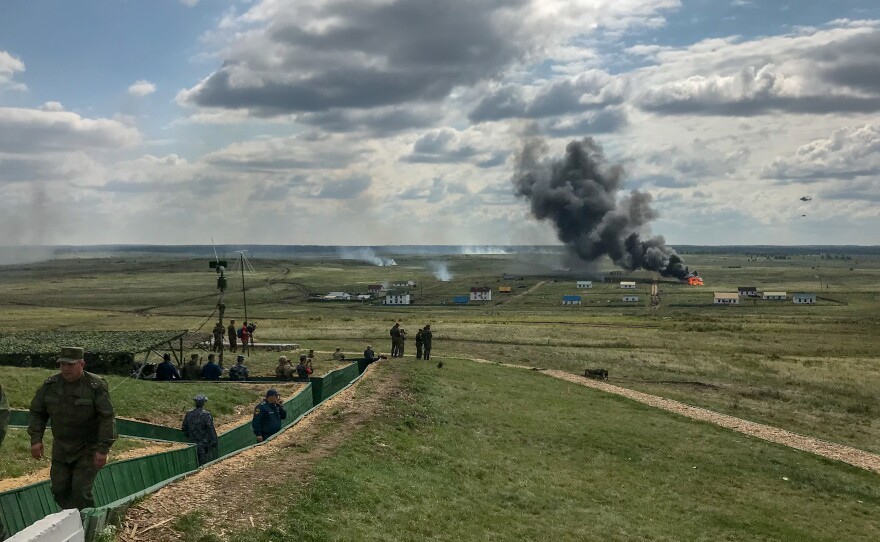The ground trembled as Russian Sukhoi attack jets blasted off at the Shagol airfield in the Ural Mountains. Close behind them, fighters from China and assault planes from Kazakhstan roared into the late-summer sky.
The multinational air force was assembled 900 miles east of Moscow last week to take part in an "anti-terrorist" exercise called "Peace Mission 2018." According to the drill's scenario, Islamic extremists had established a foothold in "Country A" in Central Asia.
By the time the warplanes arrived to drop their loads, armored vehicles from the Russian-led coalition were already closing in on a village supposedly seized by militants. Waves of Russian and Chinese attack helicopters followed.
The exercise on the remote Chebarkul tank range was a dry run for even bigger Russian war games with China, starting next week. Moscow is billing the upcoming Vostok-2018, or East-2018, exercises in eastern Russia as the most massive in almost four decades.
"Russia's entire Central Military District, with all its personnel, will directly take part in the upcoming military maneuvers," said Lt. Gen. Alexander Lapin as a helicopter clattered overhead. "We will proudly take part in these exercises – unprecedented in their size – and apply new methods for the current circumstances."
Last fall, Russia held giant war games on its western border, rattling neighbors in the Baltic Sea region. Likewise, the U.S.-led NATO alliance also holds regular military exercises near Russia. With almost all of its former Eastern European allies now in NATO, Moscow is keen to show off its expanding military ties to Asia.
"Peace Mission 2018" was held under the auspices of the Shanghai Cooperation Organization, a loose grouping of Eurasian nations. The 3,000 troops who participated came from seven member countries, with regional rivals India and Pakistan taking part in a joint military exercise for the first time ever.
Before the drill, there was even evidence of fraternization, as Pakistani officers snapped photos with their Indian comrades near the viewing platform on a hilltop.
"We're soldiers," said a smiling Pakistani brigadier. "Even when we fight, we talk to each other."
Valery Gerasimov, chief of Russia's General Staff, watched the exercise with senior visiting military figures, including Gen. Li Zuocheng from China's People's Liberation Army, Lt. Gen. Satish Dua of India and Pakistani Gen. Zubair Hayat, before retiring to a field tent for lunch. The generals toured a display of military equipment, including the Rys and Tigr armored vehicles that made their debuts in Russia's 2014 occupation of Crimea, and Russian gun trucks used in Syria.
Moscow's three-year campaign fighting on behalf of President Bashar Assad's forces in Syria's civil war has provided invaluable combat experience, which Russia is passing on to its partners, said Lapin.
"We see how geopolitical risks are increasing, and that's why we're uniting to repel any threat from any direction," he said.
One of the challenges of the exercise was to create a unified command structure for a multinational force taking orders in Russian, Chinese and English.
"I won't say it was a major problem, but a little one," said Lt. Col. Sauptick Mitra, an Indian Army artillery officer. "Every command post had interpreters, so there was no problem in communication as such."
At the rehearsal for the exercise's closing ceremony, some of the supervising officer's instructions turned into a garble of Russian, Chinese and English.
But once the Russian military band struck up, the polyglot troops fell into rank and marched past the review stands without missing a step.
Copyright 2018 NPR. To see more, visit http://www.npr.org/.






